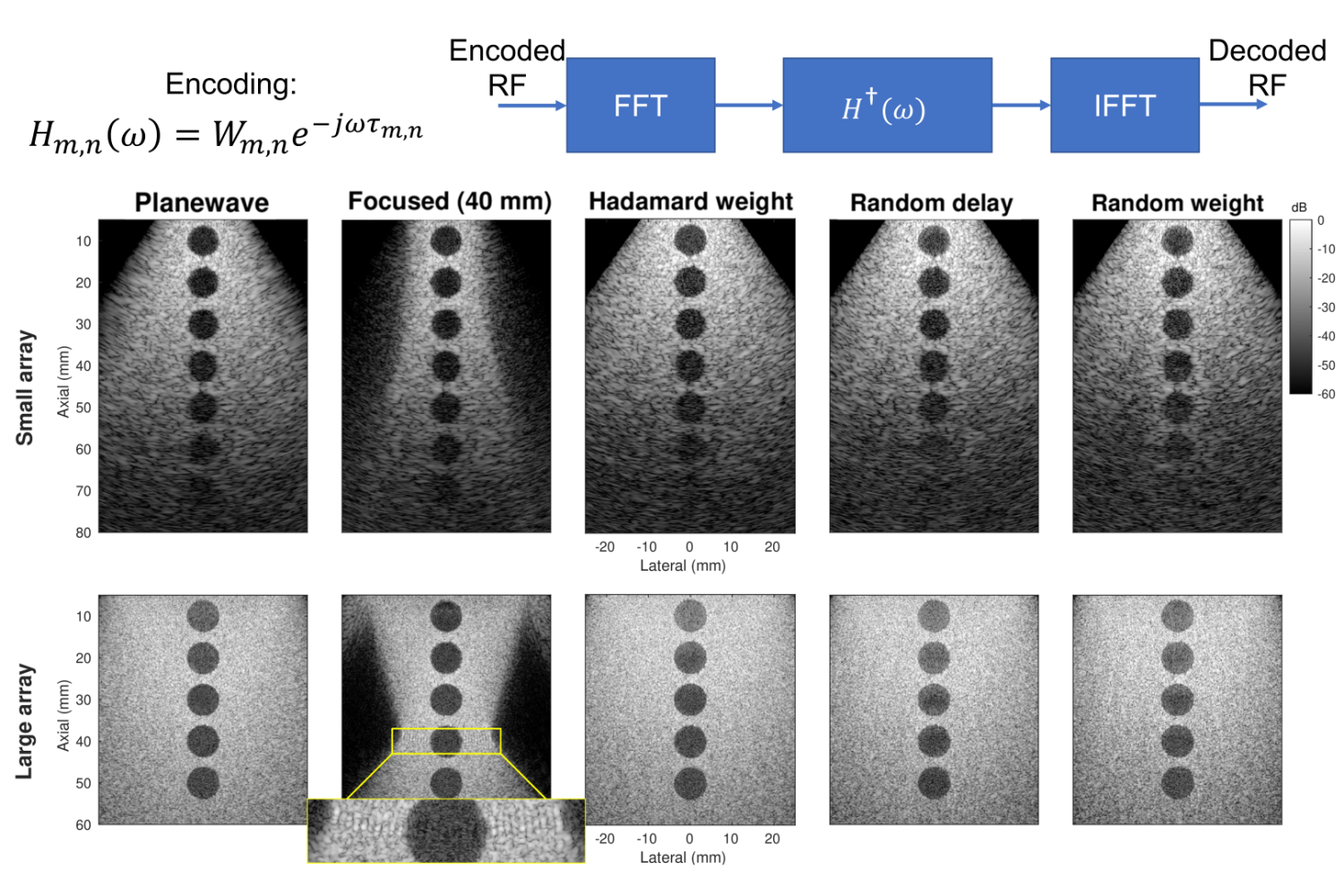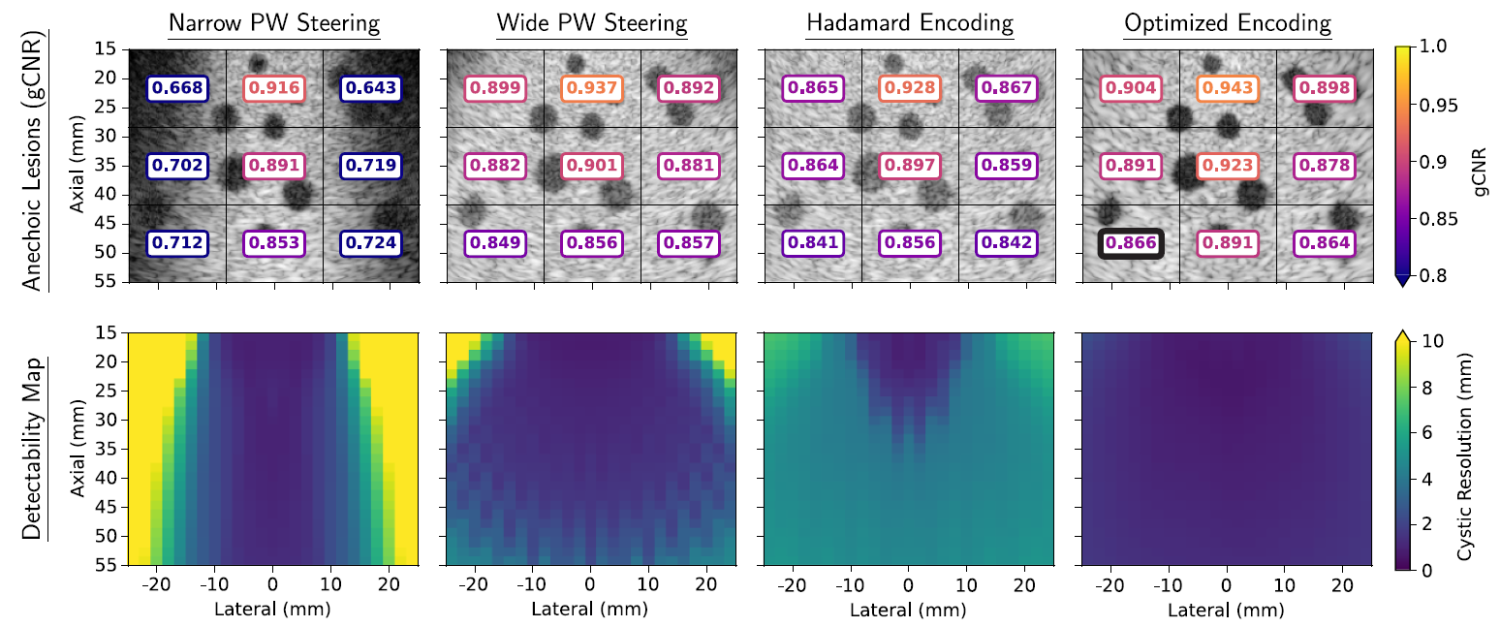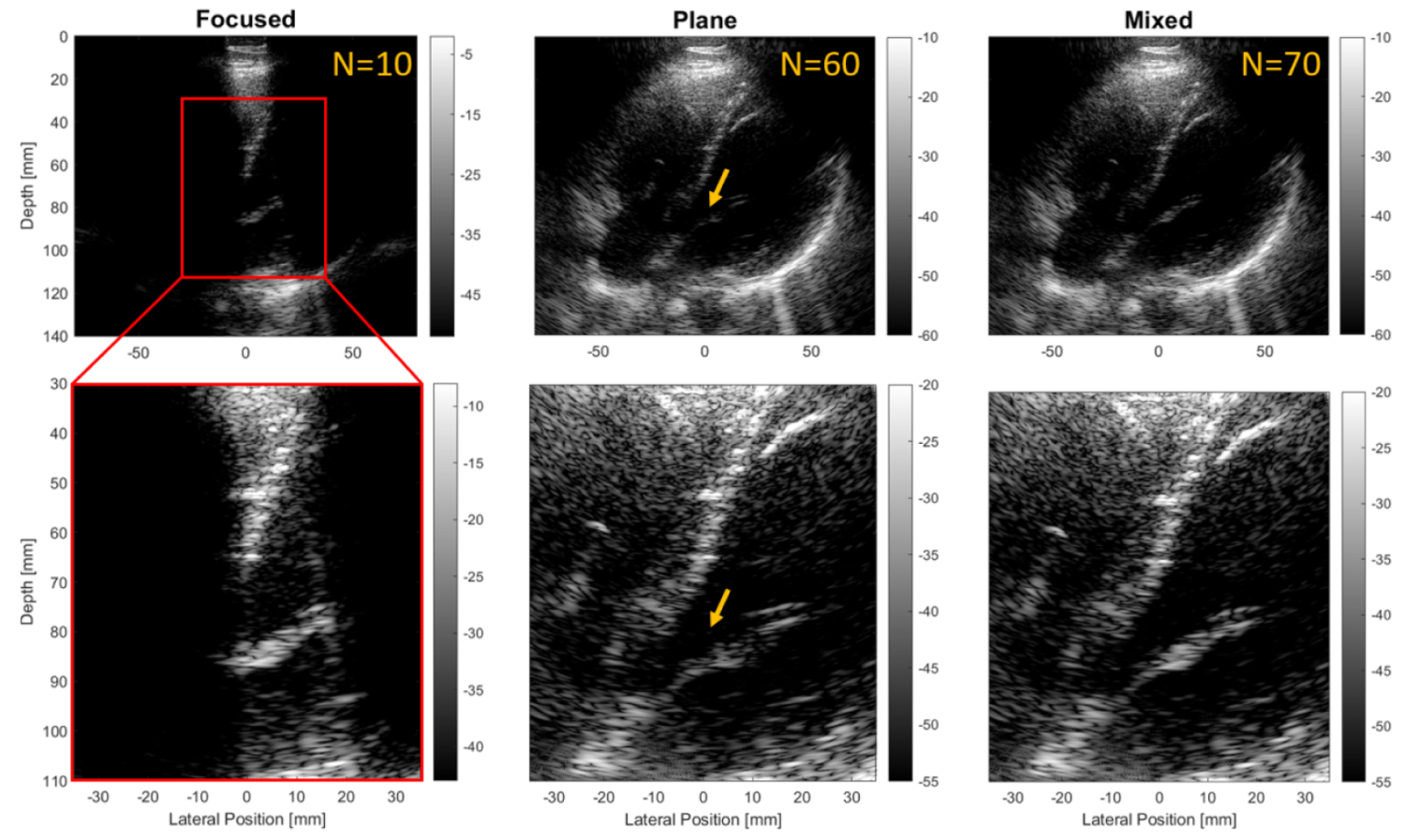Transmit Encoding Optimization
Conventional imaging approaches are based on geometry - focused beams, plane waves, diverging waves. Spatial encodings are rooted in information theory - Hadamard codes, for example. We are exploring new approaches that loosen these constraints to improve image quality and performance.

REFoCUS (Retrospective Encoding For Conventional Ultrasound Sequences) treats pulse sequencing as a linear encoding problem, making it possible to generalize decoding and synthetic aperture beamforming of a wide variety of imaging sequences. You can try it here: https://github.com/nbottenus/REFoCUS.
Read more in our papers:
- Comparison of spatial encodings for ultrasound imaging
- Extending Retrospective Encoding for Robust Recovery of the Multistatic Dataset
- Comparison of virtual source synthetic aperture beamforming with an element-based model
- Recovery of the complete data set from focused transmit beams

This approach has enabled us to explore further using advanced numerical methods to optimize transmit encodings for image quality improvements. We demonstrate that treating an imaging sequence as an underdetermined encoding and optimizing for various image quality parameters can produce images with expanded field of view and reduced off-axis scattering.
Read more: Optimization of array encoding for ultrasound imaging

We also seek to understand the role that biological motion plays in this system. Synthetic aperture approaches generally assume a stationary target (or apply complicated motion correction). We demonstrate the relative sensitivity of different imaging sequences and combine more rapid and less motion sensitive approaches into a single mixed sequence.
Read more: Improved Spatiotemporal Resolution in Echocardiography Using Mixed Geometry Imaging Sequences

